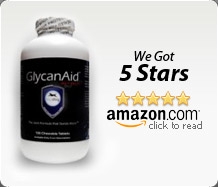Post-Op Rehabilitation For Dogs With Acl Injuries

Do you know which is the most common injury related to the canine species? Problems related to cruciate ligament are quite debilitating and many times owners and caregivers have no other choice but to opt for surgical intervention. While, there is no doubt regarding the fact that ACL surgery for dogs is an extremely crucial process, post operation care needs also cannot be ignored. For many dogs is a long drawn out process where they take time to recover slowly and gain their original strength and rambunctious behavior.
Early rehabilitation in the post-operative phase is quite desirable, since it helps in optimal recovery process. In general, post-op rehabilitation starts three days after the surgery. The rehabilitator goes through the physical and medical history of the canine in question before recommending a specific program. Main aim of such evaluation is to gauge the needs and capabilities of your dog and offer tailor made solutions that fit.
First week
During the initial stages of the rehabilitation program, there are two main aims.
• Reduction of inflammation in affected area
• Contracture of muscle mass prevention
3 to 5 min short leash walk is a regular feature before starting of exercise program. This gives the rehabilitator a chance to assess the gait of the hind limb and note the weight bearing and non-bearing capacity. Presence of head bobbing is indicative of pain. Massaging of the legs and relevant muscles will help to relax or loosen them. This is followed by passive range of motions (PROM). This helps in the circulation of synovial fluid in the joint area preventing muscle contract. Use of ice packs regularly in the operated area is another much during the first week after dog ACL surgery.
Second week
Second week continues with the aim of preventing contracture of muscle mass through tailor made rehabilitation program. Assessment of gait occurs after sling walk. Before starting the exercises, application of heat moist pack is necessary. This helps in relaxing and loosening up of muscle before workout. After heating completion it is time to flex stifle, the aim here is to extend it to the tolerance capabilities of the patient. Massaging of thigh muscles is also performed during this phase, followed by weight bearing exercises such as standing-weight shifting.
Up to seventh week
From the third week up to the seventh muscle building remains the main aim along with switching to normal activities and function on a gradual basis. Outdoor walking now becomes extended mind is the requirement of sling. Walking along curbs means successful weight bearing promotion known as curb walkovers. Mild lameness in the dogs is a common feature of during this stage. Heat moist pack application, with controlled, slow leash walking becomes a feature now. A variety of interesting and highly beneficial exercise programs aid the dog to walk, which also includes swimming.
While there is no doubt regarding the fact that the aim of the rehabilitation programs is to ensure complete recovery, the ultimate progress depends upon different factors. This includes cruciate ligament dogs surgical success, client compliance, age, and weight.
Those, who want to know more about post-op rehabilitation related to the dogs, may visit the website http://topdoghealth.com/.
